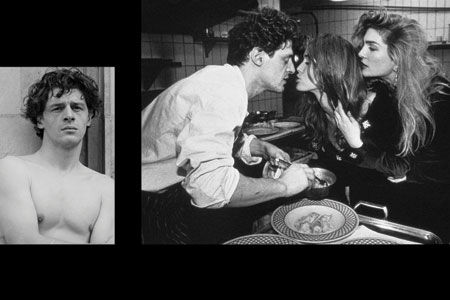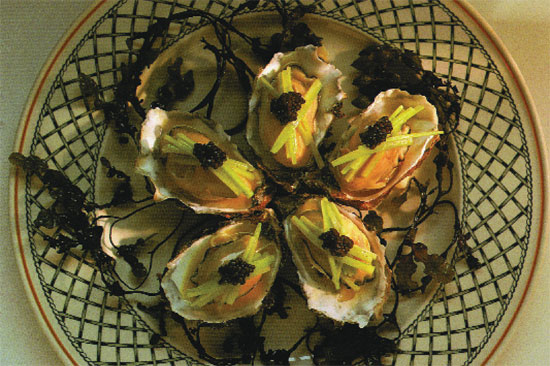Book review: White Heat 25
White Heat 25
By Marco Pierre White
Mitchell Beazley, £25
However, it is, of course, only with the benefit of hindsight that I know just how special it really was. Harveys has since gone on to be regarded as the defining location in the rise of the British chef, proving that home-grown talent could match, and very often surpass, his or her Continental counterparts to an extent that had been unthinkable a generation before.
When it comes to books, White Heat was equally revolutionary, a fact confirmed by re-reading my original copy alongside the just-published 25th anniversary edition.
This is the book that showed, warts and all, that the kitchen was a cool place to be and hence helped inspire the culinary careers of countless young people. While Harveys provided the opportunity for many to enjoy Whiteâs culinary genius, as well as being the place where future stars such as Gordon Ramsay, Jason Atherton and Phil Howard cut their gastronomic teeth, it is plausible that the influence of White Heat was even wider-reaching.
For a youngster with no clue as to where his (and it was primarily young men) future lay, a copy of White Heat was a lure into a passionate and energetic world. The images from the late Bob Carlos Clarke may have been in black and white, but they depicted a colourful rock ânâ roll environment.
White was someone who turned his back on traditional hierarchies and stiff white toques and hence appealed to those who did not wish to be restrained by a conventional work setting.
White Heat 25 is divided into two parts: the first two-thirds replicate the original book, and the final section provides an up-todate perspective on Harveys with an epilogue written by journalist James Steen, together with previously unseen images by Clarke.
The original part of the book combines the iconic Clarke photography â" which captured the imagination of the likes of Tom Kerridge, Sat Bains and Paul Kitching â" alongside 35 of Whiteâs most memorable recipes. The juxtaposition of the two elements â" the âwar zoneâ captured by Clarke behind the kitchen door and the refined, formal food, photographed by Michael Boys â" could not be more stark.
Looking back with 25 years of food history behind us, Whiteâs food now appears somewhat dated in presentation, although I know when the dishes appeared out of that crazy kitchen, they tasted sensational. While the carefully turned vegetables and artfully placed ingredients were of their time, there is no doubt that the obsessive hours spent by White on creating certain combination of flavours, textures and aromas resulted in technically precise, exceptional dishes that are often copied but rarely surpassed.
White, who went on to become (at that time) the youngest holder of three Michelin stars at the age of 33, described just one dish as âperfectâ. His tagliatelle of oysters with caviar (opposite) was a marriage of two recipes he had cooked while working at Le Gavroche and Le Manoir aux QuatâSaisons.
âIt has all the elements required for a good dish,â he wrote. âIt has body â" both to look at and to touch, in the mouth; and the flavours are light, rich, balanced, true.â
Other dishes that I remember are the fillet of sea bass with ratatouille and essence of red peppers; lobster with its own vinaigrette; tranche of calvesâ liver with a sauce of lime; Scotch beef, confit of shallots and garlic with a red wine and shallot sauce; and roast pears with honey ice-cream. No
doubt, with the publication of this book, what is described by White as âthe food of the Godsâ will create a whole legion of new fans.
Bains was one of many chefs captivated by the original book. âWhite Heat sparked an insane quest for me,â he writes in the new edition. âIt was a quest to be the best chef I could be.â
Kerridge describes it as âthe most influential cookbookâ of all time. âWithout Marco Pierre White and the White Heat cookbook, many a chef around my age would not be in chef whites. We would probably be on a building site or in a fishing boat.â
It is clear that the White captured captured in Clarkeâs iconic photography resonated with many chefs worldwide. âHe looked like⦠well⦠us!â, writes Anthony Bourdain, the American chef who later revealed the grim realities of the restaurant business in his own book, Kitchen Confidential.
"All the cooks and chefs we knew looked like starved greyhounds… ferret-thin, sleep-deprived, undernourished, poisoned by alcohol and nicotine and God knows what else after work.â
The impact of both White Heat and Harveys cannot be questioned. I do, though, feel uncomfortable reading about the abusive behaviour that White dished out to members of his brigade, who on occasions were mentally and physically broken by the experience in a matter of days.
Stories of chefs being dumped in bins, throttled and hung by their apron strings on hooks on the wall are all here. In the most extreme case, a kitchen porter complaining of a sore was plied with Armagnac and port and dumped outside in the freezing cold courtyard. Two hours and a snowstorm later, the man was discovered suffering from alcohol poisoning and the onset of hypothermia.
Among Clarkeâs newly published pictures â" one depicting White as some kind of rock God draped over a tombstone â" is one of a young chef whose whites have been slashed to pieces when he moaned about being too hot.
Some may call it a bit of banter, an initiation ceremony or rite of passage. I would describe it as a clear case of bullying. I applaud Whiteâs culinary
achievements and for being the facilitator for bringing a whole swathe of talented British chefs to the fore.
However, I really hope when it comes to his degrading (although not unique) style of management â" which he explains today by saying he was driven by âan addiction to adrenalineâ â" that this book captures a moment in history that is well and truly in the past.
By Janet Harmer
Tagliatelle of oysters with caviar
Youâve got all the components here of a great dish: simplicity, elegance, graphic impact, texture, fine flavours. Itâs grand but understated. Itâs not enough for a dish just to have a great flavour; itâs only when the taste of a dish equals its visual appeal that you know youâre on to a success. This is one of the few dishes I know which actually does that. Itâs very rare.
Serves 4
- 20 fresh oysters (shelled, retaining their juices and the rounded shell)
- For the sauce beurre blanc
- 4 shallots, very finely chopped
- 75ml white wine vinegar
- 225g unsalted butter, cut into cubes
- Salt and freshly ground white pepper
- Lemon juice to taste
To serve
- 225g cucumber (as dark a green as you can find)
- 25g butter
- 225g tagliatelle
- Fresh seaweed and/or rock salt
- 2tbs black caviar
To make the sauce
1 Put the shallots in a pan with the vinegar and bring to the boil. Continue to boil for a minute or two to drive off the acidity and concentrate the flavours. Add a few drops of cold water and bring the mixture back to the boil.
2 Remove the pan from the heat and gently but quickly whisk in the butter piece by piece.
3 Leave the sauce to infuse for 20 minutes. Then season with salt and pepper and a little lemon juice. Pass through a muslin-lined sieve. Taste and adjust seasoning again, if necessary. Warm through just before serving.Â
To prepare the tagliatelle and cucumber garnish
1 Peel and de-seed the cucumber and cut it into julienne strips about 4cm long. Place in a pan with just enough water to cover and half the butter. Bring to just beneath the boil and simmer until the cucumber is just tender. Drain, pat dry and keep warm.
2 Just before serving, gently warm the tagliatelle in just enough water to cover, along with the remaining butter and seasoning to taste.
To cook the oysters
1 Scrub clean the oyster shells. Place them in a small pan, cover with water and bring to the boil to sterilize and warm the shells.
2 Strain the oyster juices to remove any traces of shell. Place the juices in a small pan and bring to the boil with a little water, if needed, to cover the oysters. Add the oysters and poach them gently over a low heat until they are just firm to the touch â" about one minute only!
Drain the oysters, pat dry with a clean cloth and keep warm.
To serve
1 Dress each plate with a bed of seaweed or rock-salt â" if you have neither, a little mashed potato under each shell will keep the oysters stable. Place the five warmed oyster shells on each plate.
2 Wind the well-drained tagliatelle around a fork to make a nest to settle inside each shell. Place an oyster on top, then cover with a few strips of cucumber.
3 Spoon the sauce beurre blanc gently over the oysters and then place a few grains of caviar on top of each. Garnish the plate with seaweed if you wish.
Recipe from White Heat 25, by Marco Pierre White


















